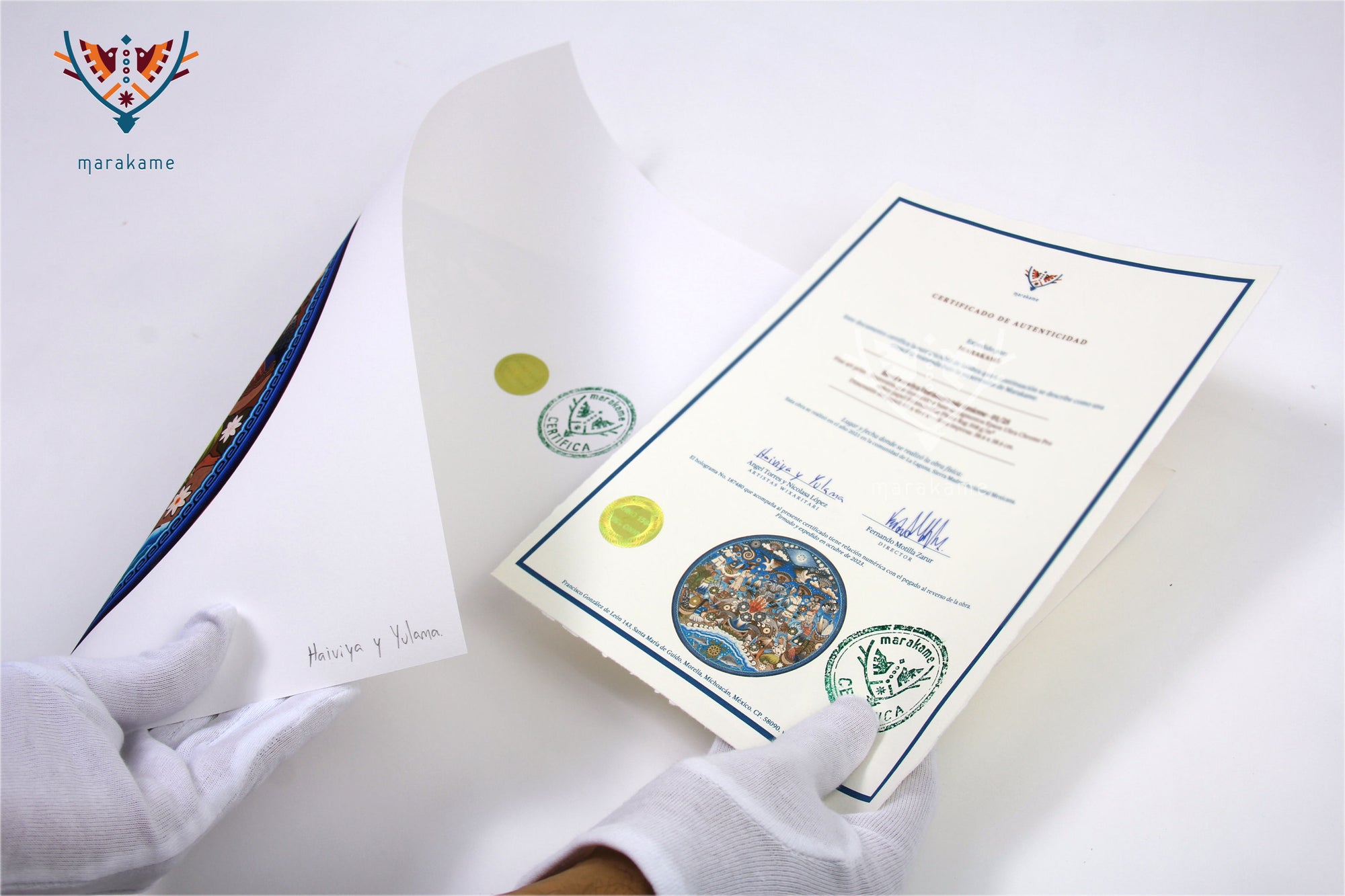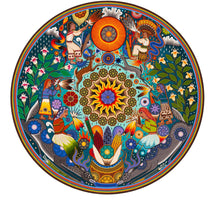
The Work of Angel and Nicolasa
For 4 years, Arte Marakame worked in collaboration with Haiviya and
Yulama (Wixaritari names of Ángel Torres de la Cruz and Nicolasa López
Reza), commissioning and accompanying the production of six pieces in the
technique known as thread painting, well known in the wide
production of Huichol art.
Refund policy
If your merchandise has a significant defect, please send mail to hola@artemarakame.com within a period not exceeding 7 calendar days with your full name or the name of the person who made the purchase order, photographs of the product and what is damaged, broken, or missing, as well as the packaging inside and outside wherever shipping label visible. The case will be analyzed and up to six different alternatives are offered, reserving the probability of an additional one, depending on the case, and if we consider it so:
1. Exchange for another piece, which being unique, would be selecting one or more to your liking as long as the price at which the piece was purchased is equivalent to that of the requested piece.
2. That the part be returned to us, repaired and resent.
3. Money back-upon receipt of the piece in our studio.
4. Credit available for when there is a piece to your liking.
5. Partial refund to cover restoration costs.
6. Redo the piece.
In any of the six cases, depending on the damage to the piece, we reserve the right to request that the piece be returned for repair and disposal for sale, the shipping cost of which would be covered by us. In the event that you must return the piece, it must be with a package equivalent to the one that protected it when it arrived at its last destination, just as we packed it. Otherwise, we could have a total loss of the piece, so there would be no refund.
When a package is shipped to another country, it may be subject to import taxes, duties, or fees imposed by the destination country. Generally, these charges must be paid once the package arrives in the destination country. Depending on the country, the buyer may be required to pay these charges when receiving the package. The loss of a piece by omission in the payment of tariffs by the buyer invalidates the guarantee that Arte Marakame gives to it.
It is worth mentioning that by buying a product in Arte Marakame, you are accepting these policies.
Note: If the damaged craft was purchased from a dealer, please contact them directly and follow their refund policy. Arte Marakame does not accept returns of handicrafts purchased from distributors.
Clarifications on the exchange rate
1.- The final price will always be shown in Mexican pesos (MXN) in accordance with current regulations.
2.- If you choose PayPal as your payment method, there may be a slight discrepancy in prices due to the exchange rate provided by both services, with PayPal being independent of Arte Huichol - Marakame.





























